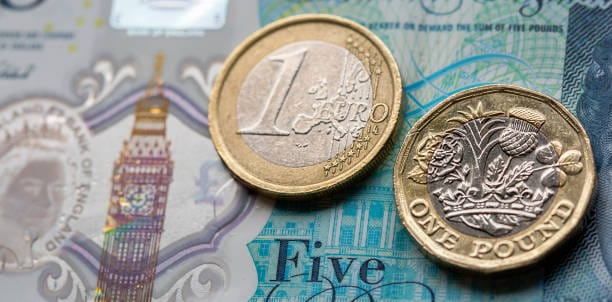GBP/EUR exchange rate week review: pound hits fresh 5-month low against euro
20/01/2025 to 24/01/2025: The pound euro (GBP/EUR) exchange rate recovered from a multi-month low after an influential business survey showed UK growth picked up slightly at the start of the year, led by Britain’s dominant service sector.

Monday
The pound euro (GBP/EUR) exchange rate dropped around half a percent, hitting a fresh five-month low a fraction above the €1.18 benchmark, before paring some of its losses. Headwinds were generated by mounting expectations for a Bank of England (BoE) interest rate cut in February following recent economic data and dovish comments from policymakers.
The euro firmed after the dollar was rocked by Donald Trump’s inauguration as President, causing it to benefit from its strong negative correlation with the US currency.
The single currency firmed despite mounting speculation of policy loosening from the European Central Bank (ECB) after Croatian central bank chief Boris Vujcic said market expectations for interest rate cuts are reasonable,
Tuesday
The pound euro exchange rate drifted lower following a mixed labour market report from the UK economy.
While British wage growth accelerated in the three months to November as forecast, the UK unemployment rate unexpectedly increased from 4.3% to 4.4% during the same period, pointing to the fragility of the domestic economy.
The euro was largely subdued, despite a decrease in economic morale in the German economy in January. A modest improvement in investor sentiment was achieved amid the safer single currency’s appeal compared to its riskier peers.
Wednesday
The pound came under pressure after the UK’s latest public borrowing data showed government borrowing jumped unexpectedly to £17.8bn in December, inflaming investor concerns over the increasing cost of UK debt.
The euro continued to benefit from its inverse relationship with the dollar, but its upside was limited by dovish central bank commentary. ECB policymaker Yannis Stournaras advocated for faster rate cuts if US trade tariffs are introduced against the Eurozone.
These opposing fortunes caused the pound euro exchange rate to soften to around €1.182.
Contact a currency specialist to discover how they can help you take control of exchange rates.
Thursday
The pound ticked up into the €1.18 mid-range versus the euro after demand for the safer single currency was undermined by a cautiously optimistic market mood. Moreover, further ECB interest rate cut bets and underwhelming Eurozone consumer confidence soured euro sentiment.
Despite growing for the first time in three months in January, consumer confidence in the bloc remained in negative territory, indicating lingering pessimism. The flash index rose to -14.2 from -14.5 in December, in line with forecasts.
The pound was subdued amid a lack of influential economic data from the UK economy. Investors brushed off downbeat data from the Confederation of British Industry (CBI) showing sentiment within the manufacturing sector declined at the fastest pace in over two years in January.
Friday
The pound jumped to within touching distance of the €1.19 benchmark following the release of a leading gauge of private-business activity in the UK for the manufacturing and services sectors.
Lukewarm growth across British businesses ticked up at the start of the year, but employment and optimism continued to contract, and price pressures rose, according to the UK S&P Composite Purchasing Managers' Index (PMI).
The preliminary PMI reading ticked higher to 50.9, a three-month high, from 50.4 in December, exceeding expectations for a further decline in January to 50.0, the index’s dividing line between growth and contraction.
The Eurozone PMI also posted a better-than-expected reading for January, with the composite PMI increasing from 49.6 to 50.2. However, the data still pointed to a stagnant economy amid a contracting manufacturing sector.
The euro was also buoyed as investors readjusted expectations for interest rate cuts and bet that US trade tariffs targeting the Eurozone won’t come into force as soon as previously expected.
Looking ahead
The ECB’s first interest rate decision of the year is announced on Thursday. While a cut has been largely priced in the single currency could face fresh downward pressure if rate-setters feel further policy easing will be required in the coming months.
The Eurozone’s latest GDP figures also hit the headlines on Thursday. Signs of a slowdown in growth in the fourth quarter of 2024 may also weaken the single currency.
The absence of notable economic data from the UK economy means the pound may take its cues from wider market trends.
